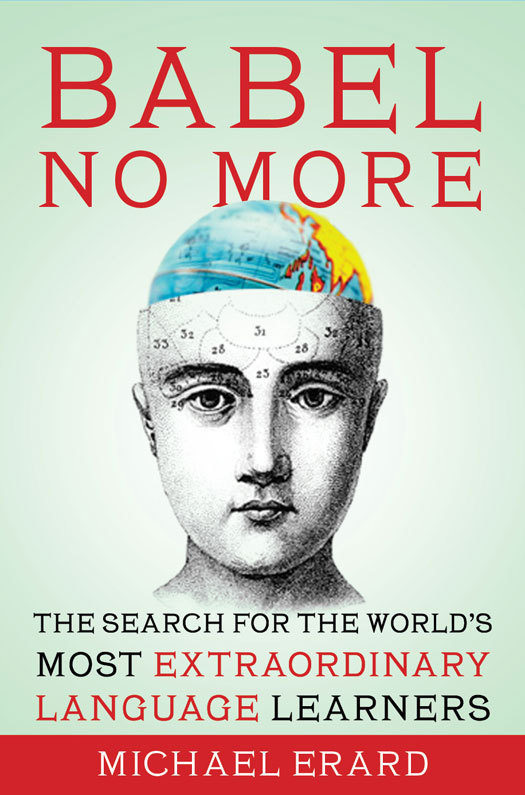
Cover of the book Babel No More by Michael Erad
Like the map of the American West, the parts of the human brain are named for its explorers, who had a penchant for honoring each other with slices of cerebral territory. Broca. Wernicke. Heschl. Brodmann. Rather unhelpfully to someone who doesn't live and breathe brain anatomy, those same territories go by other names. The anterior parietal cortex. The transverse temporal gyrus. I thought, there's got to be a better way.
I thought this a lot when I was spending a lot of time figuring out where things happen in the brain, and I worried that readers of the book I was working on wouldn't want to resort to flashcards. The book is about people who can speak a lot of languages, so presenting a certain level of detail about the brain was necessary for the story. An artist friend had a suggestion: Put small brain icons in the margin of the text, with no caption or annotation but a star marking the relevant area. Yet no single 2-d perspective would suit all the locations, so icons, which would have to each be named, would multiply. I wanted a solution that you could literally hold in your mind. Icons in the margin wasn't it.
Then, this occurred to me: When you talk about the brain, there's a lot of powerfully vivid geographical metaphor: “maps,” “regions,” “territory,” “hemispheres.” Powerfully vivid and very useful, I thought. Why not take the geography of the brain more literally and match its locations with the surface of the earth, relying (and perhaps gambling on) people's intuitive sense of places on the globe?
It turns out that this works pretty well. Get one of those globes you can pick up (mine happens to be an inflatable, vinyl one), and turn it so that Europe faces you, and that the imaginary north-south line, the prime meridian, which runs through Greenwich, England, lines up with your nose. You've heard of the prefrontal cortex, the seat of human consciousness and cognitive control. There it is, in an area that ranges from the equator northward to the North Pole, east to the Middle East, and west across the Atlantic Ocean in line with the northern coast of Brazil. You can't do brain surgery this way, but the method could improve people's fluency in brain anatomy rather easily.
For instance, talking about where some language functions are controlled. When I place my hands at the equator on opposite sides of the globe and hold it front of me (the prime meridian in line with my nose) — my left hand on the brain's right hemisphere, my right hand on the left — the edge of my right thumb will be right next to the Arabian peninsula and the Arabian Sea. This is Broca's area, the area of the brain associated with speech control (and other things). It was once thought that people who speak a lot of languages will have anatomically larger Broca's, which wasn't true.
Neuroscientists are moving away from functions-in-place towards networks and circuits that connect areas of the brain, which you can describe using the brain-as-globe metaphor. Take the “stream” that maps speech sounds onto strings of motor commands, so that a person can turn sounds they hear into sounds they say. I was interested in getting people to picture how this stream runs. In neurospeak, the stream “projects dorso-posteriorly toward the parietal lobe and ultimately to frontal regions.” On the brain-as-globe, the stream connects north India to eastern Mongolia. Easy, right? You don't even need to specify the hemisphere.
The brain-as-globe metaphor also resonates with some of the themes of the book: Information, people, and money are flowing more easily around the globe, over and through borders. Speaking more languages is an asset; what you can do with them is becoming more important than how native-like you speak them. The figure of the polyglot (or the very multilingual person, the hyperpolyglot) is someone who can represent all the peoples and places of the world in one body without conflict or confusion. The hyperpolyglot — or, more properly, his or her brain — is the world, or yearns for it.
I was fortunate that the guy who designed the cover of the book, Blake Trabulsi of Zocalo Design in Austin, Texas, picked up on some of these themes, which is how I got this image for the cover of Babel No More.
